Leer en español. | Download as a PDF. | Listen with an audio reader.
The Metolius Preserve is a butterfly hot spot—home to more than 50 different species! Here are fifteen kinds of butterflies to watch for as you explore the Preserve.
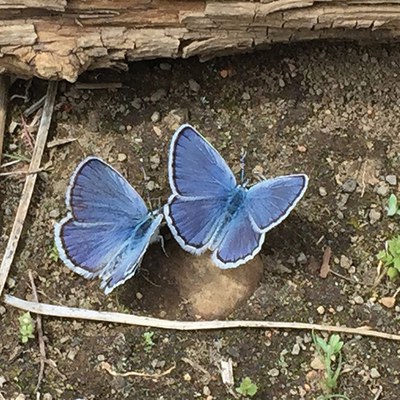
Of the many different species of small blue butterflies in Central Oregon, the echo azure is the most common one seen early in the spring. These small bright blue beauties herald the arrival of spring—the robin of the butterfly world—hence their other common name, spring azure. Look for them in wet spots along trails where they frequently “puddle” sipping salts and minerals from damp soil.
Best time to see: early spring.
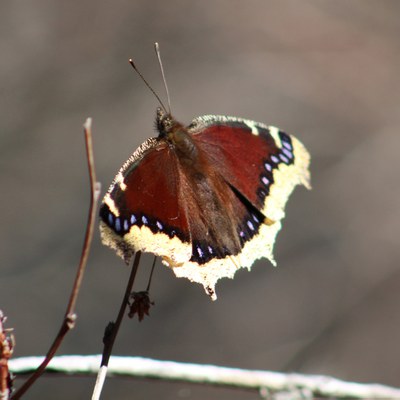
These large butterflies are some of the first to emerge in the spring. Mourning cloaks are a velvety chocolate color, with iridescent blue spots along a bright yellow margin. They overwinter as adult butterflies, emerge in the spring to lay a new batch of eggs, and then the caterpillars grow throughout the summer months. In the fall, you’ll see a fresh batch of adults taking flight and enjoying the final days of warmth before finding cover for their winter hibernation.
Best time to see: spring and fall.
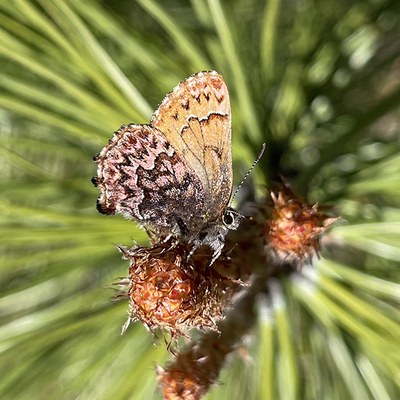
A small mauve-brown butterfly with jagged bands of color near the edge of wings. Common in spring and early summer, you’ll see these tiny gems flitting around pine saplings along trails. They may be small, but they have big attitudes—often chasing intruders (human and insect alike) away from their pine perches.
Best time to see: spring-early summer.
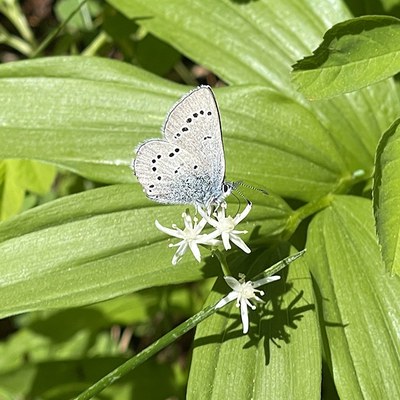
Another brilliant little blue, this one is typically observed after most of the echo azures have disappeared in late spring-early summer. Note the pattern, an orderly row of black dots, on its underwings that differentiate it from the echo’s more dainty and ornate markings.
Best time to see: late spring-early summer.
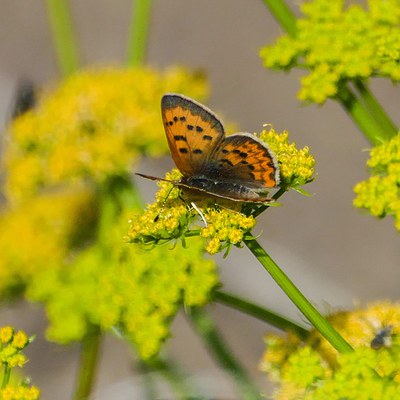
This small brownish-orange butterfly has an orange band along the hindwing and males sport a purple iridescence on their topside. You can typically spot them flitting along the roadsides and open meadows throughout the summer.
Best time to see: early summer.
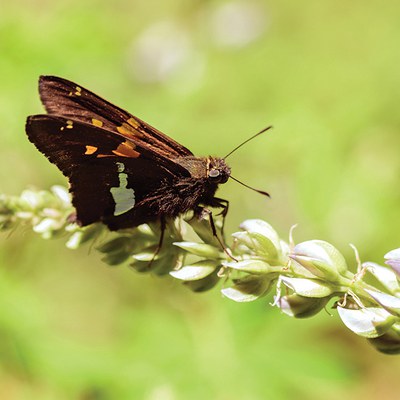
Skippers are a family of butterflies that have a stout, compact body, rapid wing beats to gain flight, and hooked ends on their antennae. The silver-spotted skipper is the largest (although just medium-sized compared to other butterflies) and most dramatically colored skipper at the Metolius Preserve. Look for its unmistakable brown-black wings with a silver band on the underside flying in early-mid summer.
Best time to see: early-mid summer.
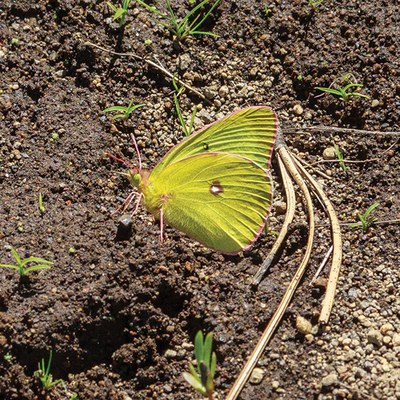
This medium-sized butterfly has bright yellow wings with beautiful pink underwing borders and pink antennae! Always in a hurry, see them racing through forest openings. Consider yourself lucky if you spot one at rest or nectaring.
Best time to see: early-mid summer.
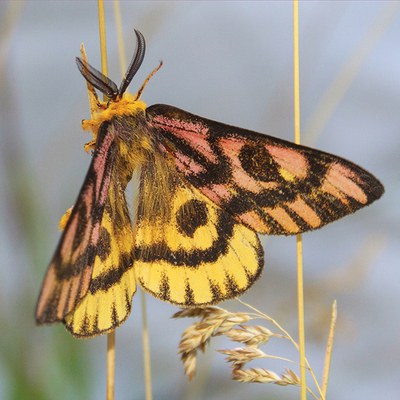
Not a butterfly, but a colorful daytime flying moth! As the name suggests, these moths are active during the day. One easy way to tell the difference between a butterfly and a moth is to look at its antennae. Butterflies have a long antennae with a bulb or club at the end. Moths’ antennae can be feathery, saw-edged, or simply a long shaft. Next time you’re at the Metolius Preserve keep an eye out for these large fuzzy, pink, yellow, and black winged wonders. Their rainbow sherbet palette lends a little magic to the air.
Best time to see: early-mid summer.
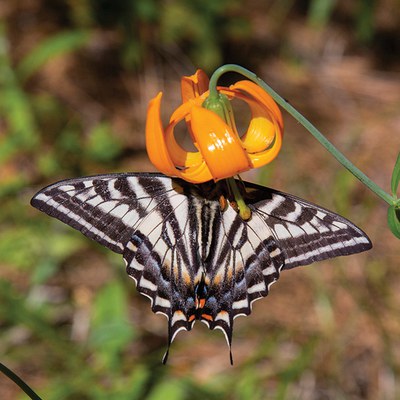
Large striking butterfly with pale white/cream wings and black tiger stripes, and bright orange and blue marks near its long slender tails. Western tiger swallowtails (buttery yellow, instead of pale) are more common in Central Oregon, but the Metolius region is a great area to spot pale tigers all summer long.
Best time to see: all summer.
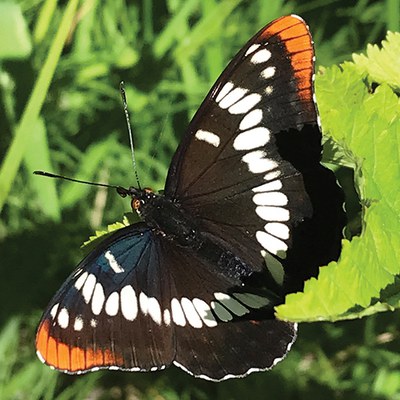
One of our most stunning butterflies! Large and vividly colored: jet black slashed with glowing white diagonal stripes, orange wing tips on top, and brick red and white below. Find these mid-summer, flitting about Pacific ninebark shrubs along Lake Creek. Wait a few minutes on one of the Metolius Preserve bridges and you’ll likely see one patrolling its territory.
Best time to see: mid-summer.
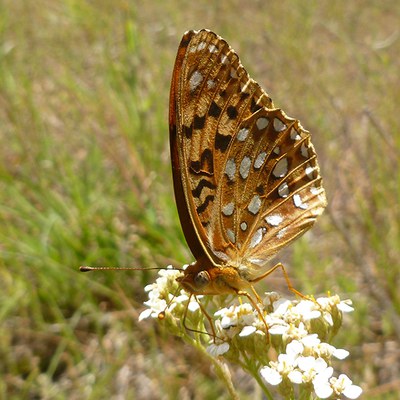
It can be very difficult to distinguish one species of fritillary from another of these bright orange, medium-sized butterflies. Like the little blues, you need to look closely at the underside of the wing to tell them apart—and even then it can be difficult. Look for medium-sized rounded, glistening silver spots on the underside of the hindwing in this species.
Best time to see: mid-summer.
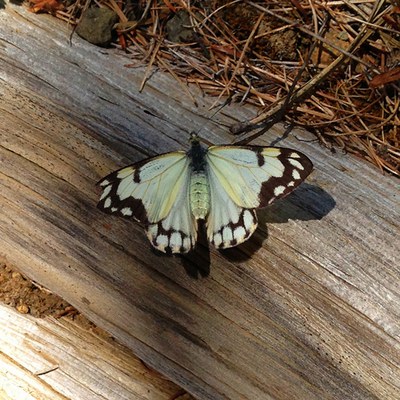
A rather elusive medium-sized butterfly, the pine white loves middle elevation forests like the Metolius Preserve. In mid-late summer, look for these milky white insects flitting about in the treetops, where they lay their eggs on pine and fir needles so their caterpillar offspring can feed on the needles.
Best time to see: mid-late summer.
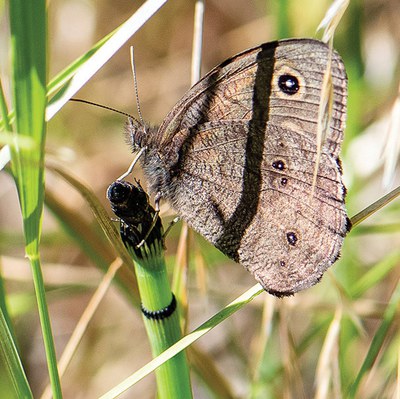
A medium sized brown butterfly with distinctive yellow-ringed eyespots on the wings. These eyespots are genius! Birds are a common predator of butterflies, often gobbling up their nutrient-rich midsections and leaving pieces of wings in their wake. If you’re a butterfly and you want to avoid that fate, you can direct the bird’s attention away from your vital organs by developing fake eye spots to your wings!
Best time to see: mid-late summer.
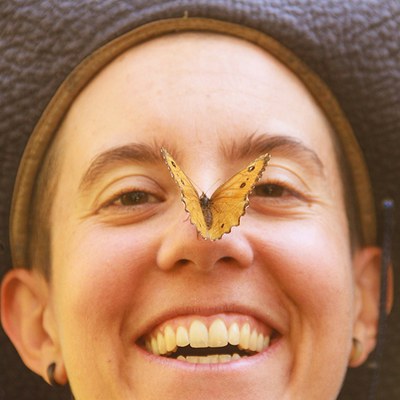
Large, orange-brown butterfly with two eyespots on the forewing. This special species is biennial, meaning it takes two years to complete metamorphosis. The great Arctic hibernates as a young caterpillar their first winter, and then as mature caterpillars through their second winter. If you want to see one of these at the Metolius Preserve, be sure to visit mid-late summer on an even year.
Best time to see: mid-late summer.
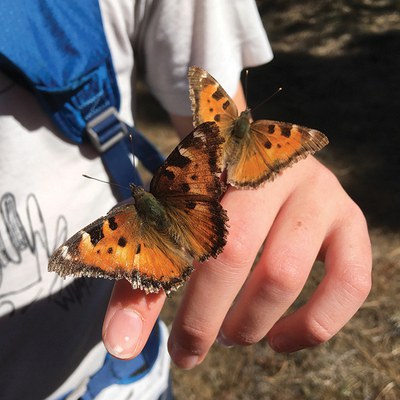
Look for this medium-sized bright orange butterfly with black wing margins and black spots. Often confused with monarch butterflies (also orange and black), but without the crisp windowpanes. Look for them on trails where they frequently “puddle” sipping salts and minerals from damp soil, or find them swarming by the hundreds, or even thousands, each summer in the mountains.
Best time to see: spring-fall.
Learn more:
- See our full Metolius Preserve Butterfly List
- Central Oregon Butterflies
- Tips for an Excellent Butterfly Expedition
- Join us for a guided butterfly walk (May-July, each year)!


